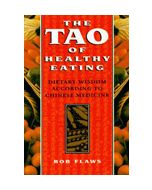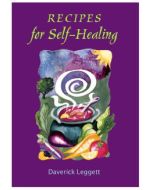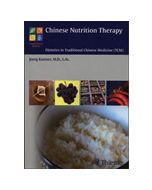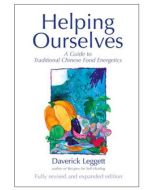We use cookies to make your experience better. To comply with the new e-Privacy directive, we need to ask for your consent to set the cookies. Learn more.
The Book Of Jook: A Healthy Alternative To The Western Breakfast
These Chinese medicinal porridges - called jook in Cantonese and congee or porridge in English - can be a healthy alternative to the typical Western breakfast. Cooked in a crockpot overnight and combining specific grains, vegetables, meats, eggs, or various Chinese herbs, there are medicinal porridges for every type of ailment. Included are hundreds of herbal porridge recipes for both prevention and remedial purposes. This book is great for laypersons as well as professional readers.
I have always been fascinated by breakfasts. There is some thing so reliable and traditional about them. Whilst we may deliberate what to have for supper, we generally know exactly what we're going to eat and drink first thing in the morning, if only to avoid making difficult decisions at such a delicate hour. These personal rituals are mirrored nationally, with each "country" having a distinct traditional breakfast, whether a croissant and grand creme in France, honey and cream on warm flat bread in Iran, soft white cheeses and sour creams with cucumber and fruit in Israel, feta cheese and watermelon in Turkey, bacon and eggs in England or porridge in Scotland.
The Chinese breakfast is based around congee (zhou in Mandarin; jook in Cantonese) a thin gruel of watery rice supplemented and flavoured by a variety of additions. Congee is a good example of the qing dan diet. Qing means clear, pure or light and dan means bland. A qing dan diet is based around cereal grains, pulses, vegetables and fruits - foods high in qi, and uses relatively little food which is rich in wei (flavoursome, rich, dense, moist, greasy and slippery). Although foods which are rich in wei (for example animal foods, sugar, fats and oils) are highly nutritious and able to enrich yin, and therefore an essential part of the diet, they are harder to digest and in excess may result in the formation of phlegm and dampness. Zhu Danxi said "Those poor and humble people in the mountains and wilderness know nothing but a bland and homely diet, but their movements never betray decrepitude and their bodies remain safe and sound". Li Chan of the Ming dynasty said: it is imperative to balance and regulate food and drink, avoiding whatever foods are fried, roasted or toasted, fermented, including alcohol, pickled in soy sauce, or are hot in nature lest they should dry the blood. One should also shun raw, cold fruits and vegetables, lest they damage the spleen. Sweet, bland, thin (or light) foods result in the five flavours automatically supplementing the five viscera. This nourishes the old and enriches the young alike.
Ge Hong of the Eastern Jin dynasty said "To prolong life, it is essential to keep the stomach and intestines clear". All agreed that congee is an ideal light food to nourish and smooth the stomach qi. Congee is made with 1 part of rice (usually refined) to between 5 and 8 parts of water and cooked for several hours. It can be eaten plain, or cooked with such additions as dates, nuts or seeds, vegetables, eggs, shreds of meat, fish or medicinal herbs. Medicinal congee, to which this book is devoted, may be taken to prevent disease and maintain health, or used alongside herbal medicine to treat disease. Some prescriptions are actually supposed to be taken with congee, for example Zhang Zhongjing says of Gui Zhi Tang "Wait for a short time (after having taken the herbal decoction) and then take 1 or more sheng of hot congee to institute a joint action". Recipes for medicinal congees are given for the treatment of diseases of internal medicine, gynaecology, paediatrics, sense organs and dermatology, as well as congees to benefit qi, blood, yin and yang. Using some method of slow cooking, they can simmer gently overnight, or else, in traditional fashion, breakfast may be taken a couple of hours after rising in which case the congee may be cooked in the morning.
Preface
BOOK 1
INTRODUCTORY THEORY
Ch. 1 The Problem with Breakfast
Ch. 2 Chinese Medicine & Digestion
Ch. 3 The Qing Dan Diet
Ch. 4 Congee
Ch. 5 Using This Book
BOOK 2
TREATMENT FORMULARY
Ch. 1 Internal Medicine
Ch. 2 Gynecology
Ch. 3 Pediatrics
Ch. 4 The Five Officials
Ch. 5 Dermatology
Ch. 6 Enriching & Supplementing
General Index
Congee Recipe Index
| Summary | Bob Flaws |
|---|---|
| Author | Bob Flaws |
| Publication Date | 1 Jan 1970 |
| Publisher | Blue Poppy Press |
| Number of Pages | 225 |
| Book Format | Softback |
An excerpt from The Book of Jook: Chinese Medicinal Porridges, A Healthy Alternative to the Typical Western Breakfast Chinese Medicine's Descriptions of Individual Foods
Just as every medicinal herb and substance has its own individualized Chinese medical description in tcm, so does every food. In other words, in tcm, each food has its own flavors, nature (meaning temperature), direction, channel entering (or the organs on which it exerts its greatest influence), functions, indications, and contraindications. If we know each of these various aspects about a food, we can, according to both tcm theory and 2,000 plus years of Chinese written and recorded clinical experience, know what effect that food will have on any given individual. In other words, if we know the patient's tcm pattern diagnosis, we can tell if any food will either benefit that person or make them sick (or sicker).
For instance, take the tcm description of rice. Rice's flavor is sweet and its nature or temperature is neutral. The directional effect it has on the qi of the body is upbearing. That means that rice tends to promote the arising of clear qi in the body. In terms of functions, rice fortifies the spleen and boosts the qi at the same time as it harmonizes the stomach. This means that rice significantly helps generate and transform qi at the same time as it promotes good digestion. In addition, rice quenches thirst, relieves mental depression, and stops diarrhea due to spleen vacuity. Therefore, rice is recommended in the tcm dietary treatment of indigestion, nausea, vomiting, diarrhea, and vexatious thirst due to summerheat.
Now let us look at pork. Pork's flavor is sweet and salty. Its nature or temperature is also neutral. Its direction is both upbearing and downbearing. Its functions are that it supplements the kidneys, enriches yin, and moistens dryness. Therefore, pork is used to treat kidney vacuity low back pain, spermatorrhea, night sweats, and senile deafness, all believed to be symptoms of kidney yin vacuity according to Traditional Chinese Medicine.
* Orders shipped outside of Europe are eligible for VAT relief and will not be charged VAT.







